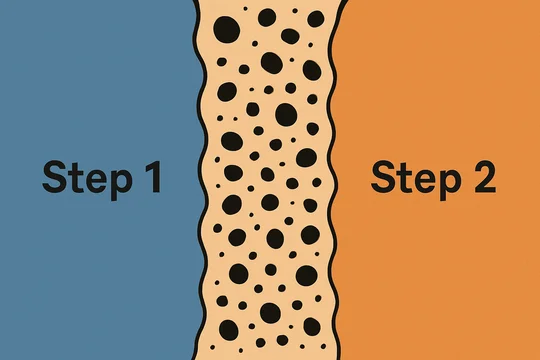On Friday, Chief Judge Stark released his opinion summarizing his bench rulings from his most recent Section 101 day. This is how the patents fared:
Content Square v. Quantum Metric, Inc., C.A. No. 20-832-LPS (D. Del.)
In the first case, Content Square, the Court invalidated the claims of 2 of the 5 asserted patents.

The invalidated patents related to "heat map patents," which relate to displaying heat maps of web browsing data. These include U.S. Patent Nos. 10,063,645 and 10,079,737.
The third patent, which was not invalidated, related to "creating multiple versions of a website to determine users' preferences." Interestingly, the Court held that the claims were directed to an abstract idea but were saved on Alice step 2 in part by a reference to "web crawling":
While Defendant may ultimately prove that the web crawling limitation could be practiced using conventional web crawling techniques, which is at a minimum suggested in the specification, for instance, at column 4, lines 43 to 47, I am unable to find today, on the very limited record, that the claimed web crawling was conventional, well understood, and routine.
This is interesting because the specification appears relatively unambiguous that web crawling is a conventional activity:
In one embodiment, the tracking server 130 is configured to monitor websites and to collect testing data by crawling through the Internet and scanning each encountered webpage to determine if it is under testing. The crawling can be performed using conventional web crawling techniques.
Beyond that, web crawling has been an established technique since at least the mid-1990's. Of course, that doesn't help at the motion-to-dismiss stage.
The final two patents related to user tracking and "session replay" relating to websites. The Court held that defendant had failed at both step 1 and step 2 on these claims, and the patents are not invalid. It analogized the algorithms at issue to the McRO lip sync case, which found that an automatic lip synchronization method was not abstract.
Moxchange LLC v. Ale USA Inc., C.A. No. 20-1123-LPS (D. Del.)
In the second case, Maxchange, the Court did not invalidate any claims of the 3 asserted patents.
The patents related to generating encryption keys and authentication between wireless devices.
The Court declined to make a decision as to Step 1 of Alice, but found at Step 2 that claim construction was necessary for all three of the patents.
Chief Judge Stark rejected the idea that patent elements are conventional just because they appear in the prior art:
Plaintiff is correct that just because what is now purported to be inventive may have been referenced in prior art, that does not prove that something was conventional, well understood, and routine.
The Court did, however, invite an early, possibly pre-discovery round of claim construction and summary judgment briefing as to the § 101 issues:
I invite the parties as they are meeting and conferring and formulating their scheduling proposals to consider whether to propose a schedule that would get us to claim construction early, perhaps even before much or any discovery, and to further consider whether we might efficiently benefit from another round of motions practice after claim construction. I'm not agreeing that I will do any of these things, but I am willing to consider them, and I do invite the parties to consider whether they want to propose any of that and whether they think any of it logically follows from what I said today in denying the 101 motion.
Blix Inc. v. Apple Inc., C.A. No. 19-1869-LPS (D. Del.)
In the third case, Blix, the Court invalidated all remaining claims of the single asserted patent, U.S. Patent No. 9,749,284.
It had previously found that a single claim was invalid, but that it was not representative of the other claims. In this opinion, the Court invalidated the remaining claims.
Chief Judge Stark made some interesting observations as to the structure of briefing on the claims:
There is a somewhat tricky matter as to representative claims . . . . [I]n the November opinion[,] based on the briefing I had before me at that time[,] I found that claim 17 was not representative. I see no reason to reevaluate that decision today.
In the briefing for today, Apple briefed all 26 remaining asserted claims but Blix did not. Its brief is limited pretty much to claims 1 and 11. But Blix did not agree that these claims are representative of any other claims. Blix is correct that it's Defendant's burden to show by clear and convincing evidence that each of these 26 claims is not patentable. So, technically, I suppose Blix is correct that it does not have to respond to Apple's arguments on all of the claims. However, of course, it would have been helpful if Blix had responded on each of the claims it was still asserting and defending the validity of.
Under step 2, the Court readily rejected the majority of the dependent claims a bring "result-oriented" instead of relating to "a computer-oriented solution or problem." It ultimately invalidated all 26 of the remaining claims.
Total Score: Claims of 6 out of 9 patents valid; 3 invalid
All told, the outcome is not unusual by the standards of previous § 101 days,.
There is, of course, much more detail in the combined opinion, which is embedded below.
If you enjoyed this post, consider subscribing to receive free e-mail updates about new posts.




